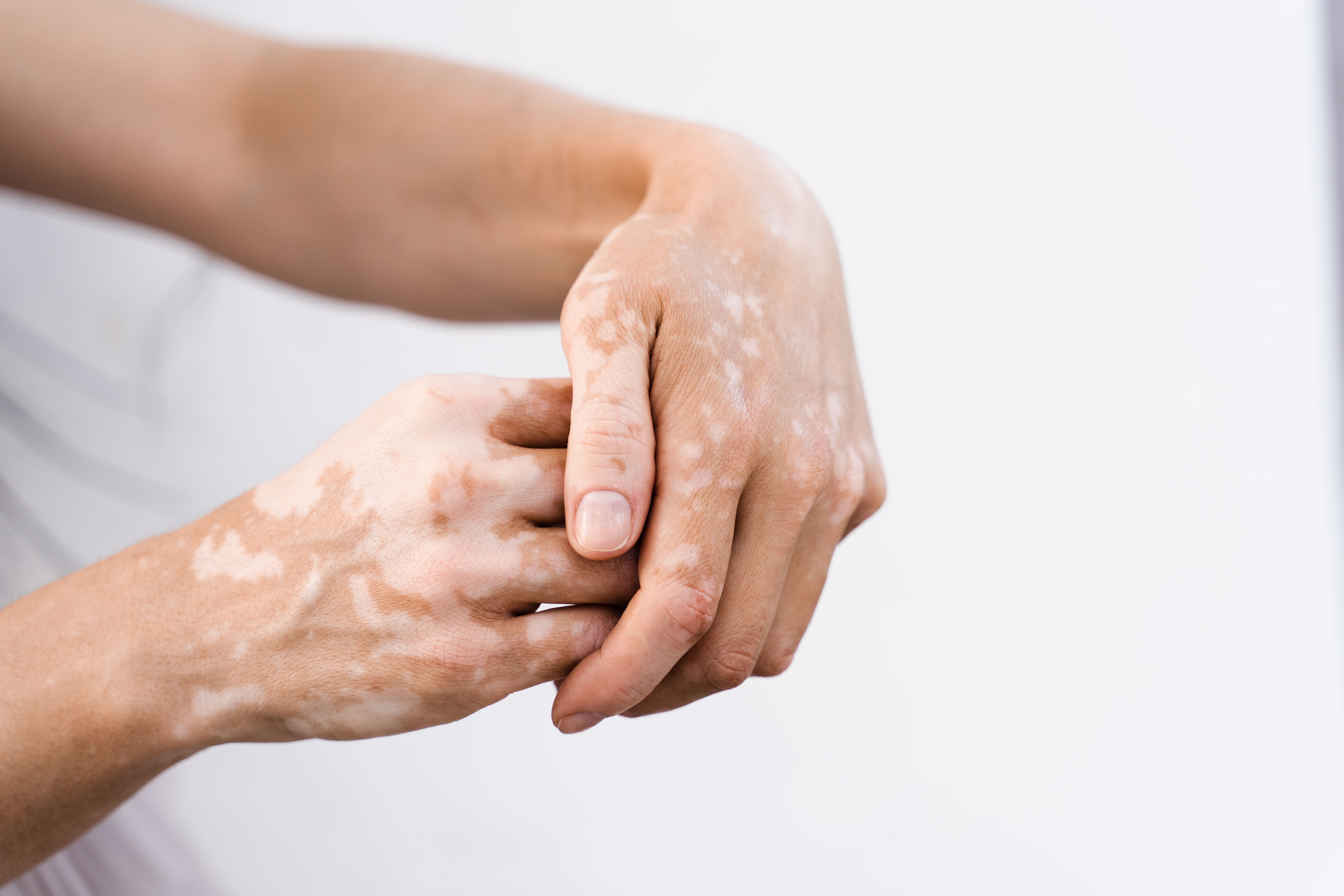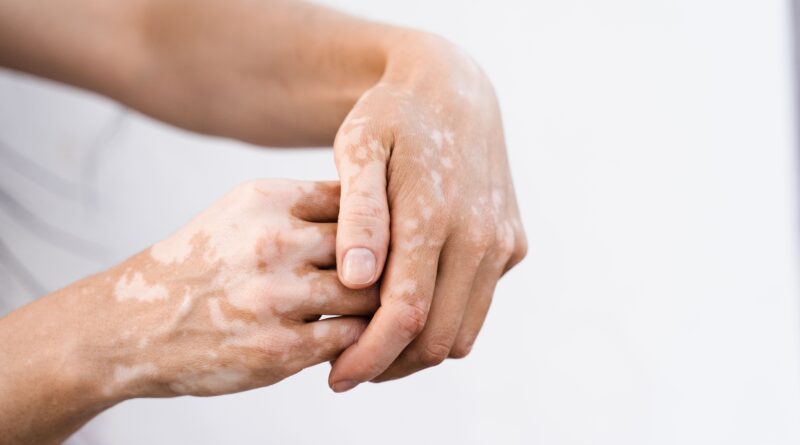Patients With Vitiligo Have Poorer Quality of Life but Greater Health Experience, Use
Patients with vitiligo are more likely to report poor quality of life but have better access to and use of health care than those without vitiligo, according to a study published in Archives of Dermatological Research.1
The researchers explained that patients with vitiligo are more likely to experience negative psychological effects, such as depression, anxiety and lower quality of life. Patients with vitiligo may also have limited access to health care; previous studies have found that about half of those diagnosed did not receive treatment within their first year after diagnosis.2
Therefore, researchers conducted a study to examine health care access and utilization among patients with vitiligo; they also assessed the burden of vitiligo in patients.1 The researchers intended to investigate whether these results may be mediated by socioeconomic status, race and ethnicity, or health-related factors.
Compared to those without vitiligo, patients with vitiligo have higher health care access and utilization but report lower quality of life. | Image credit: Rabizo Anatolii – stock.adobe.com

They conducted their study using survey data from “All of Us,” a research program from the National Institutes of Health that provides a large, longitudinal dataset of US patients.3 The researchers identified patients with vitiligo in the program based on importance International Classification of Diseases, Ninth Revision, The Revolution in Medicine (ICD-9-CM), ICD-10-CMand Systematized Nomenclature of Medicine diagnostic codes in their electronic health records.1
The study assessed quality of life, access to health care, and use of health care. In order to assess the quality of life, the researchers used the answers to the question from the “Good Health” survey, which asked patients to rate their quality of life on a 5-point scale: excellent, very good, good, fair or poor. The researchers put the answers in 2 categories: worse (fair or poor) or better (good, very good, or excellent) quality of life.
Similarly, they assessed access to health care using responses to a question from the “Healthcare Access & Utilization” survey, which asked patients if they had delayed care during the past year. past calendar due to various obstacles, including lack of transportation or inability to pay expenses. ask. Researchers considered patients to be delayed in care if they reported that this was the case for any reason.
Finally, health care utilization was determined based on one response to the “Good Health” survey. The researchers coded health care use as “yes” if the patient indicated that they had visited a doctor in the past year.
There were 409,218 patients with data available in the All of Us program as of September 2023, 1094 (0.3%) with vitiligo. However, the researchers examined only those who completed the “Healthcare Access & Utilization” and “Healthcare Access & Utilization” surveys; this included 190,209 participants, 573 of whom had vitiligo (52% of the vitiligo population).
Among these patients, those with vitiligo reported that they had good or poor health more often than those without vitiligo (14% vs 11%; Q = .037). On the other hand, a lower number of patients with vitiligo reported delayed care during the previous year due to obstacles (31% vs 36%; Q = .020) or not seeing a doctor in the past year (6% vs 11%; Q <.001).
Within the vitiligo population, non-Caucasian patients with vitiligo were more likely to report good or poor quality of life (24% vs 7%; Q <.001) and delayed attention due to distractions (42% vs 26%; Q <.001) than Caucasian patients without vitiligo.
Similarly, many of the demographic and socioeconomic characteristics examined were significantly associated with quality of life, delayed care due to barriers, and not seeing a physician. Compared with Caucasian patients with vitiligo, Black patients (OR, 1.08; 95% CI, 1.03-1.13), Hispanic patients (OR, 1.09; 95% CI, 1.04-1.15), and ethnic other races/ethnicities (OR, 1.31; 95% CI, 1.22-1.40) were more likely to report good or bad health.
In addition, Black patients (OR, 1.27; 95% CI, 1.21–1.33), Hispanic patients (OR, 1.44; 95% CI, 1.38–1.51), and patients of other races/ethnicities (OR, 1.32 ; 95% CI , 1.25-1.39) were more likely to report not seeing a doctor in the past year. Finally, patients of other races/ethnicities were more likely to report delayed care due to barriers (OR, 1.07; 95% CI, 1.25–1.39), and Black patients were unable to report delayed care (OR, 0.95; 95) % CI, 0.92–0.98).
After adjusting for patient characteristics, associations between vitiligo and having good or poor health (OR, 1.28; 95% CI, 0.98-1.66), delayed care due to obstacles (OR, 1.04; 95% CI , 0.86-1.26) ), or not seeing a doctor in the past year (OR, 0.71; 95% CI, 0.50-1.01) was not statistically significant.
The researchers acknowledged their limitations, one of which is that many people with vitiligo have not been diagnosed. Therefore, not all cases of vitiligo may appear in the All of Us group. Despite their limitations, the researchers expressed confidence in their findings.
“These results show that although all people with vitiligo are affected by their disease, people who identify as non-Caucasian may have an increased impact on quality of life and complications. access to and use of health care,” the authors concluded. “Incorporating specific information for these subpopulations into the health care process can lead to improved health outcomes.”
References
1. Crummer E, Cohen JT, Rosmarin D, Lin PJ. Impact on quality of life, access to health care, and health care utilization of people with vitiligo: an analysis of the All of Us research program. Arch Dermatol Res. 2024;316(8):554. doi:10.1007/s00403-024-03275-8
2. Rosmarin D, Soliman AM, Li C. Current Treatment Patterns in Patients with Vitiligo in the United States. Dermatol Ther (Heidelb). 2023;13(9):2079-2091. doi:10.1007/s13555-023-00983-3
3. All of Us Research Program. Public Health Organizations. December 31, 2021. Accessed September 5, 2024. https://allofus.nih.gov/sites/default/files/All%20of%20Us%20Research%20Program%20Operational%20Protocol%202022.pdf
#Patients #Vitiligo #Poorer #Quality #Life #Greater #Health #Experience
